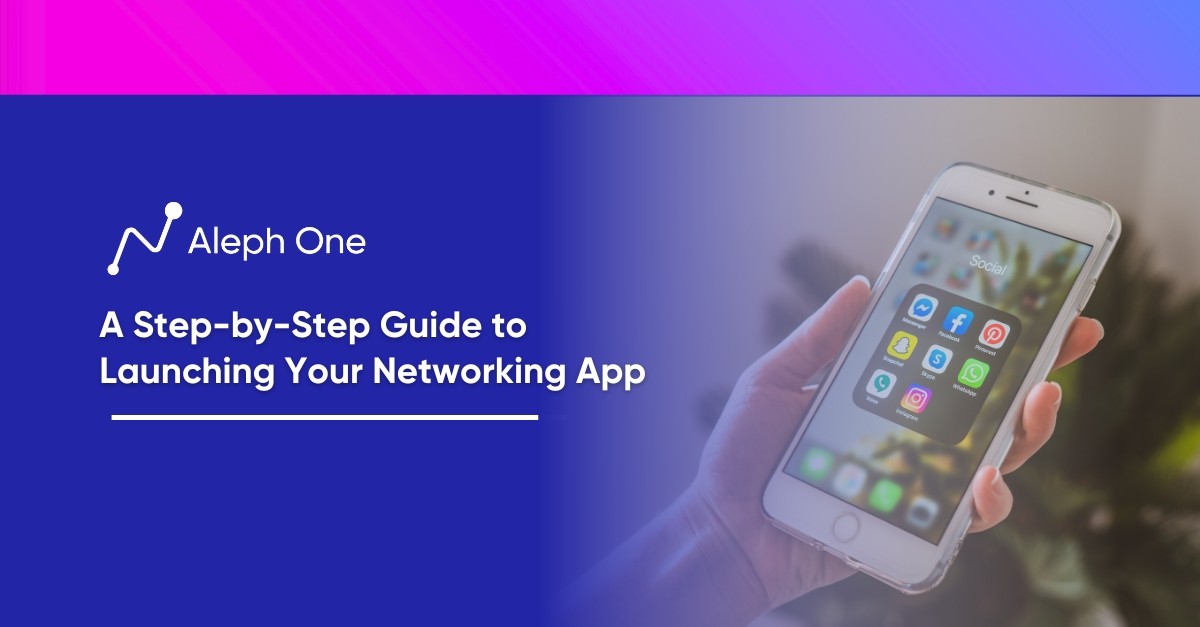Let’s work together to build something amazing. Share your project details and our team will reply to figure out the next steps to your success.

Mastering customer conversations is essential for startup success. By actively listening to customers and asking insightful questions, startups can gain valuable insights that lead to innovation and growth. Airbnb’s success story demonstrates the power of active listening, as their founders gained firsthand knowledge of their customers’ needs by engaging in open-ended conversations. Personalized messaging and proactive customer updates enhance the startup-customer relationship while mapping key touchpoints and anticipating customer needs, allowing startups to deliver exceptional experiences. Ultimately, prioritizing customer conversations and incorporating customer insights into business decisions gives startups a competitive edge, driving sustainable growth and success in the dynamic business landscape.

The Art of Active Listening: How to Gain Customer Insights
You must listen actively and ask follow-up questions to have a meaningful conversation. Startups that succeed at customer conversations employ active listening, giving customers their full attention, asking open-ended questions, and probing for deeper insights.
Case Study – Airbnb
For example, Airbnb co-founder Brian Chesky said active listening was critical to the company’s success. In Airbnb’s early days, the founders visited hosts and guests to understand their needs firsthand. They gained insights that led to their most significant innovations by asking open-ended questions and listening without judgment.
Listen and Avoid Interrupting Customers
To actively listen and avoid interrupting or finishing customers’ sentences. Pay close attention to understand their perspectives and priorities. Ask follow-up questions about why they’re unhappy with your product’s user experience. If a customer says they’re unhappy with your product’s user experience, ask what they find frustrating and why.
Let the Conversations Flow and Collect Insight
However, be careful not to make customers feel interrogated or make promises you can’t keep. Let the conversation flow naturally, and share how their insights will help improve your business. Active listening is about building a genuine connection and partnership with your customers.
Practice Active Listening
With practice, active listening can become second nature and help reframe how you see your business. Startup founders often get caught up in their vision and assumptions, but there is no substitute for the voice of the customer. Regularly talking to customers in an open and empathetic way will help ensure you’re building something people actually want and keep you ahead of trends in your industry.
Customer conversations are the lifeblood of startups. By mastering the art of active listening, you’ll gain insights to build a better product, improve customer experience, strengthen your brand, and drive sustainable growth. The key is listening with intent and turning conversations into action.
Personalized Messaging: Why It’s a Game Changer
Personalized messaging has revolutionized the way startups communicate with and serve their customers. Channels like live chat, bots, and messaging apps allow for automated yet tailored conversations that boost engagement. For startups, messaging has been a game changer.
Intercom – Case Study
Take Intercom, a startup that provides messaging-first customer communication software. Intercom leverages live chat and bots to enable personalized conversations at scale for over 25,000 companies. Their customers have found that messaging results in higher response rates and customer satisfaction than traditional channels like email and phone. Research shows that customers are three times more likely to respond to a message than an email.
The Power of Messaging
Messaging also allows for an everyday experience that feels more natural to customers. With Intercom, companies can start an automated conversation with a bot and seamlessly transition to a human agent when needed. This provides the dual benefit of quick responses and a human touch. According to studies, over 50% of customers prefer messaging a business versus calling customer service.
Tracking Customer Data and Insights Through Messaging Programs
Beyond the responsiveness and personalization, messaging gives startups valuable customer data and insights. Intercom tracks every customer conversation to help companies better understand their audience and improve the customer experience. They found that their customers receive, on average, 70% more customer feedback through their Intercom conversations than other channels.
How to Choose the Right Messaging Platform for Your Startup
While messaging is a powerful channel, it requires a thoughtful strategy to leverage effectively. Startups should consider their customer base, industry, and business goals when choosing between live chat, bots, or a hybrid approach. The key is to provide value for customers by anticipating their needs and streamlining communication. When done right, messaging can turn customer service into a competitive advantage and a critical growth driver.
Messaging allows startups to personalize customer communication, boost engagement, gain data-driven insights, and enhance the overall experience. For these reasons, messaging has undoubtedly become a game changer for startups looking to master customer conversations.
3 Ways to Proactively Update Your Customers
Proactive outreach and education are among the best ways for startups to engage customers. Rather than waiting for customers to come to you with questions or concerns, reach out first with updates, tips, and news. This helps build brand loyalty and stay on top of your customer’s minds. Here are three practical ways to proactively update your customers:
Email newsletters
Email newsletters are a tried-and-true way to reach customers with updates and new content. Services like MailChimp, Constant Contact, and Campaign Monitor make designing and sending newsletters easy. Focus your newsletters on new feature announcements, behind-the-scenes updates from your team, industry news, and actionable tips for using your product. Keep content concise and shareable.
In-app messages
For startups with mobile or web apps, in-app messages are a convenient way to update customers. You can share announcements about new features, events, or content within the app experience. In-app messages lead to high open and click-through rates since they reach customers when they’re already engaged with your product. Use a service like Intercom or Zendesk to design and schedule in-app messages.
Social media updates
Remember to appreciate the power of social media for proactively updating your customers. Post updates on new features, events, and other news on platforms where your customers are active. Also, share blog posts, videos, and other content that would be valuable for your customers. Pay attention to the types of updates and content that get the most engagement on each platform to optimize your messaging. Social media is a casual, friendly way to build brand awareness and stay in touch with your customers.
Proactive outreach is all about adding value for your customers. Updating your customers with relevant news, tips, and resources will make them appreciate your brand and rely on you as a helpful partner. The key is not to be spammy or salesy but to provide updates and content that helps your customers succeed.
The Journey to Customer Loyalty: Mapping the Key Touchpoints
The customer journey refers to a customer’s entire experience with your company, from initial awareness to becoming a loyal promoter. Mapping the customer journey allows startups to identify key “touchpoints” – any customer interaction with your brand. By optimizing each touchpoint, startups can transform customers into loyal advocates.
Identify Touchpoints in the Customer Journey
Startups should identify all potential touchpoints in the customer journey, including discovering the product, visiting the website, signing up for a free trial, onboarding, using the product, customer service interactions, renewal/upgrade, etc. At each touchpoint, consider what customers are thinking and feeling. Look for pain points or opportunities to exceed expectations.
Optimize and Personalize Touchpoints
Personalization is critical to optimize touchpoints. Use data to tailor messaging and product experiences to customers. A customized onboarding process can help customers achieve success. Value-add touchpoints like educational newsletters and webinars are a chance to connect with customers outside of transactions.
Minimize Hassle for Customer
Convenience is also essential. Minimize hassle and make touchpoints easy. A simple renewal process promotes customer retention. Friction can damage the customer experience.
Map the Customer Journey
Startups that map the customer journey often see dramatic improvements in satisfaction and loyalty. Social media management platform Buffer increased activation rates by optimizing their onboarding emails. Productivity app Evernote boosted re-engagement by sending personalized email digests of saved notes.
Research shows that customer experience is directly linked to loyalty. According to PwC, customers with an excellent experience with a company are three times more likely to repurchase and four times more likely to recommend the company. By crafting a seamless journey through optimized touchpoints, startups can gain a competitive advantage through loyalty and word-of-mouth promotion.
Anticipating Needs: How Startups Stay Ahead of the Curve
Successful startups can anticipate customer needs and stay ahead of the curve. Rather than reacting to problems, they use data and insights to predict what customers want next.
Data Analysis
One of the most effective ways startups anticipate needs is through data analysis. By tracking behavioral data, purchase history, web analytics, and more, startups can identify patterns that signify future needs and interests. For example, Amazon leverages enormous data to gain insights into customer preferences and predict what products and features will be most in demand. Using predictive analytics, Amazon can anticipate needs even before customers realize them.
Solicit Direct Customer Feedback
Startups should also solicit direct customer feedback through surveys, interviews, focus groups, and online reviews. While data provides a broad sense of trends, customer feedback offers specific suggestions for improvements and new products. Many startups like Slack and Canva regularly survey their customers and analyze feedback to determine how to enhance the customer experience. When Slack noticed customers repeatedly requesting threaded replies and channel organization features, they made plans to implement them in future updates.
Conduct Market Research
Market research is another valuable tool for anticipating customer needs. By analyzing industry reports, trends, and innovations, startups can gain insights into where customer demand is heading. They can also evaluate what competitors are doing to meet needs and how they can provide even better solutions. Conducting market research and staying up-to-date with trends is how many successful startups, like Dollar Shave Club, came up with their disruptive business ideas in the first place.
When startups anticipate needs rather than react to them, they gain a competitive advantage. They can release innovative new products, features, and services just as customers demand. The result is higher customer satisfaction, loyalty, and business growth. Startups that fail to anticipate future needs will always need to catch up to the competition.
Why Customer Conversations Must Drive Business Decisions
For startups, customer conversations are the lifeblood of the business. The insights gained from listening to customers should directly inform critical business decisions. Startups that fail to prioritize customer voices avoid losing touch with the needs and preferences of their target audience.
Case Study – Slack
Slack is an example of a startup that has benefited immensely from listening to their customers. Based on user feedback, Slack added features like threaded replies, channel organization, and message search—features dramatically improved the user experience and helped fuel Slack’s viral growth. If Slack had not focused on customer conversations, they may have missed product improvement and growth opportunities.
Customer-Centric Companies Are More Profitable
In contrast, startups that don’t pay attention to customer feedback often struggle. They launch products and features that fail to resonate and can’t gain traction because they’ve lost sight of their customers’ needs. Research shows that customer-centric companies are 60% more profitable than those that don’t focus on the customer experience. They can anticipate needs, gain loyalty, and continuously optimize the customer journey.
Customer Conversations Impact Product Roadmap
For any startup, customer conversations should directly impact their product roadmap, marketing plans, and business strategies. Startups should implement feedback loops to gather customer insights, analyze them to find key trends and themes, and then make changes to address feedback. They need to be flexible and willing to adapt based on what they hear from the people who matter most: their customers.
Gain Valuable Insights with Customer Conversations
While getting caught up in the startup hustle and losing focus on customers is tempting, no business can survive without them. Customer conversations are the best way for startups to gain valuable insights to drive sustainable growth. The startups that master customer conversations will ultimately have the most success. These startups can achieve a competitive advantage by listening to their audiences and building a customer-centric business model.
FAQ
How can startups effectively record and analyze customer feedback to optimize their products or services?
Startups can record and analyze customer feedback using tools like customer relationship management (CRM) systems, surveys, feedback forms, social media monitoring, and review platforms. They can also employ data analytics and natural language processing to identify trends, patterns, and sentiments in customer feedback. By gathering, organizing, and analyzing this information, startups can identify product or service improvements and prioritize areas that will significantly impact customer satisfaction.
What are some practical techniques for startups to implement active listening during customer conversations?
Some practical techniques for implementing active listening during customer conversations include:
– Avoiding interruptions or finishing customers’ sentences
– Maintaining eye contact and using non-verbal cues to express interest, such as nodding or leaning in
– Asking open-ended questions that start with “how,” “what,” “why,” or “tell me more about…”
– Paraphrasing the customer’s responses and asking for confirmation to ensure understanding
– Empathizing with the customer’s feelings and concerns and expressing genuine care for their feedback
In what ways can startups integrate customer insights into their overall business strategy to ensure continuous growth and customer loyalty?
Startups can integrate customer insights into their overall business strategy by:
– Aligning their product or service offerings with customer needs and expectations
– Adapting marketing messages and channels to resonate with their target audience
– Developing customer-centric policies and processes, such as flexible return policies or personalized assistance
– Incorporating customer feedback into their decision-making process, with a focus on data-driven improvements and prioritizing customer expectations
– Regularly measuring customer satisfaction levels and benchmarking their performance against competitors within the industry
Get the latest news and updates from Aleph One in your inbox.



